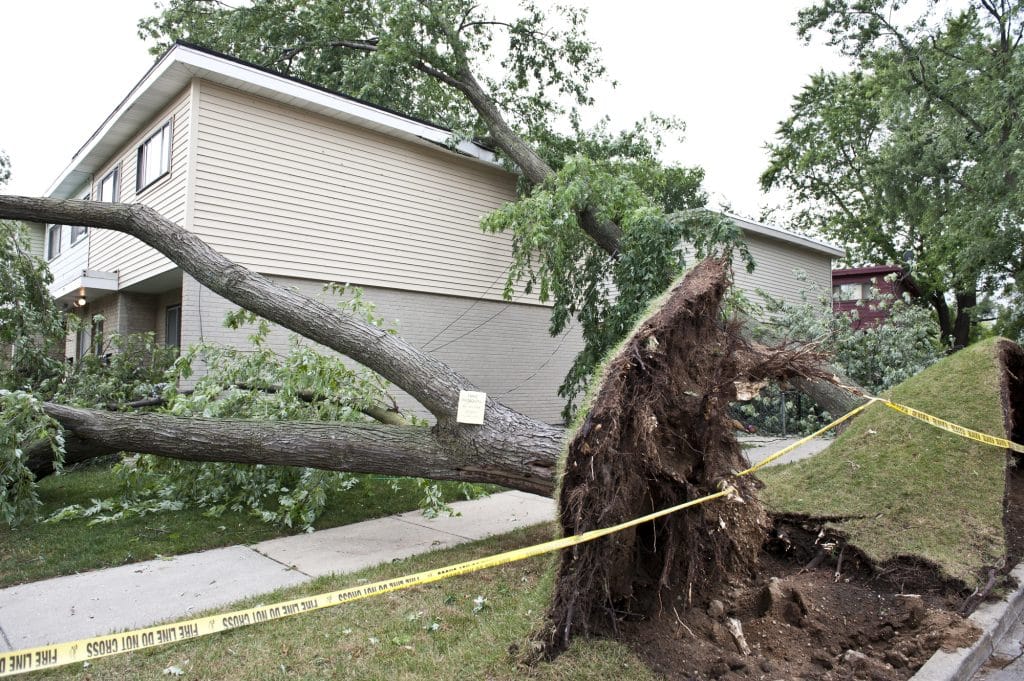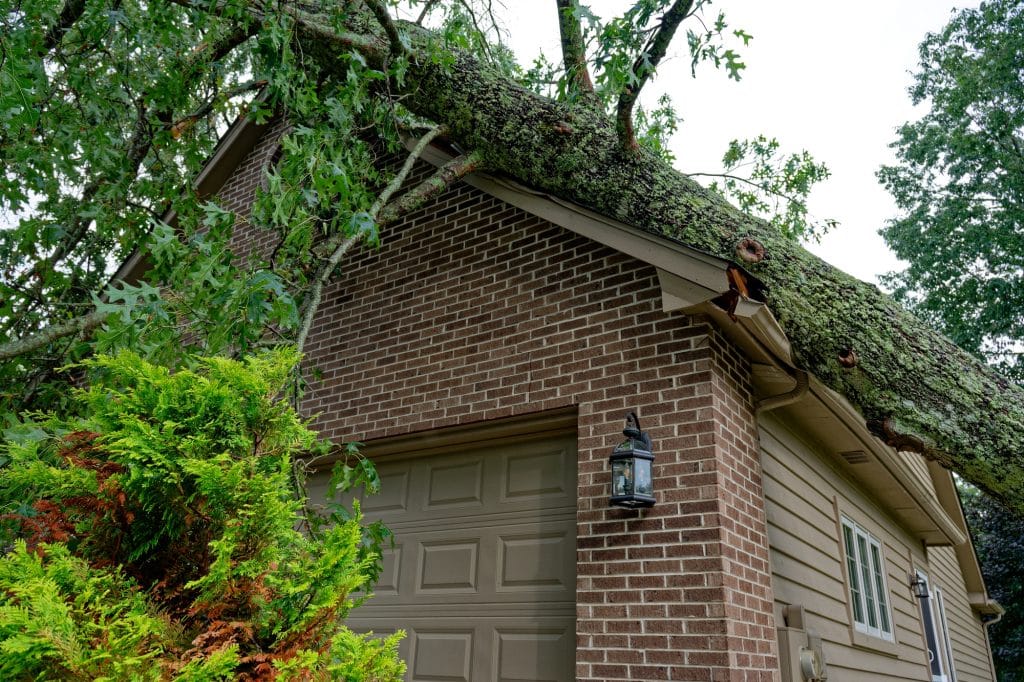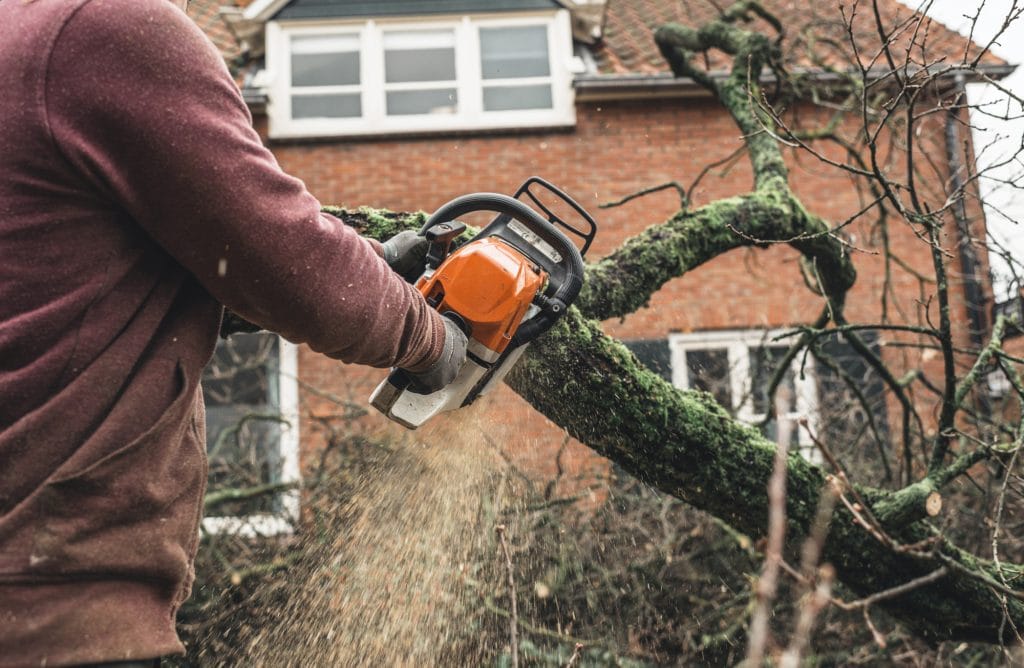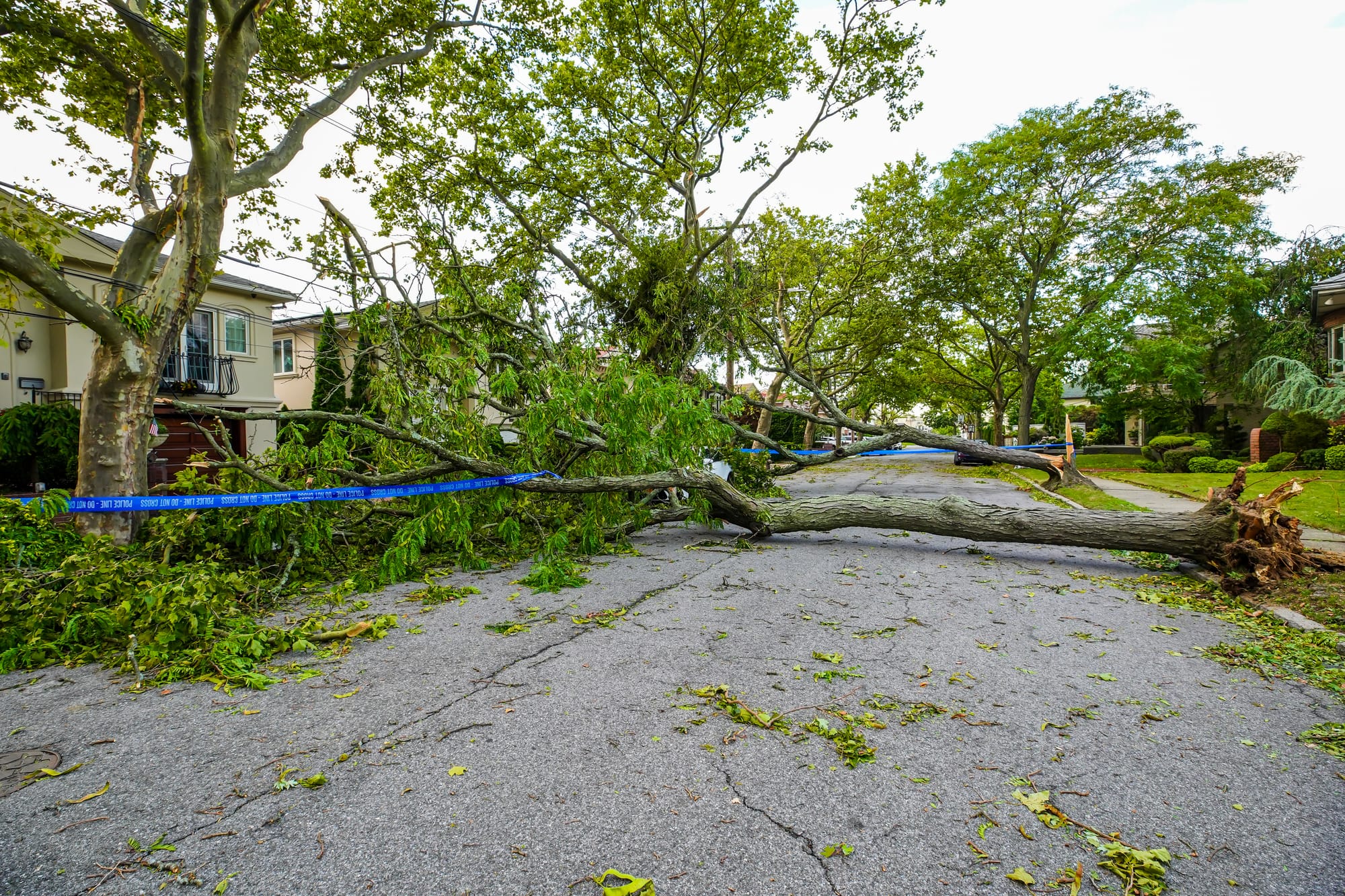You wake up after a storm and see a tree down in your yard. Now what?
It’s a stressful moment. Maybe it’s blocking your driveway, resting on your fence, or worse – damaging your home. But amid the mess, one big question looms: who’s actually responsible for cleaning it up?
When it comes to fallen trees, the answer isn’t always straightforward. It depends on where the tree landed, what caused it to fall, and who owns the land it came from.
In this post, we’ll break down the key factors that determine responsibility for fallen tree removal, so you know what to do next time nature takes its course.
First question: where did the tree fall?
The first thing to figure out is where the tree landed. That location makes all the difference in determining who needs to deal with it.
- If the tree fell on your property, it’s usually your responsibility to arrange removal, even if the tree came from a neighbouring yard.
- If the tree fell on your neighbour’s property, they’re generally the ones who need to act.
- If the tree landed across both properties, it often becomes a shared issue, especially if insurance is involved.
Here’s a common example:
A neighbour’s tree falls onto your property during a storm. It was healthy, and the fall was sudden and unexpected. In this case, your home insurance will typically cover the damage – not your neighbour’s.
But if that same tree was rotting, visibly unstable, and the neighbour had been warned? That’s when liability may shift.


What if it’s on the footpath or road?
If a tree has fallen across a public footpath, nature strip, or road, it’s usually the responsibility of your local council to handle the removal.
In most cases, these trees are considered public assets, and councils have dedicated teams or contractors to assess the risk, clear the area, and make it safe.
If you spot a fallen tree blocking a road or walkway:
- Report it to your local council as soon as possible.
- Use the council’s emergency or after-hours line if needed.
- Include the exact location and any urgent hazards (e.g. if it’s blocking traffic or near power lines).
Important: Never try to move a fallen tree from public land yourself. It could be unstable, hiding power lines, or legally protected. Leave it to the professionals.
What if the tree damaged a fence, house, or car?
When a fallen tree causes damage – whether to your fence, home, or car – the first step is to check your insurance policy. Most home and car insurance policies will cover the cost of repairs if the damage was caused by a storm, high winds, or another natural event.
But there’s a catch.
If the tree was dead, diseased, or clearly unsafe, and the owner knew but didn’t act, they could be held liable for the damage. In that case, their insurance may need to cover it instead.
To help your claim go smoothly:
- Take clear photos of the damage and the fallen tree
- Call your insurance provider as soon as possible
- Don’t move anything until it’s been documented (unless it’s a safety hazard)
A quick call to your neighbour may also help – especially if the tree came from their yard. Most people are willing to work together to resolve the issue.


Why you shouldn’t try removing it yourself
It might be tempting to grab a saw and start clearing a fallen tree but doing it yourself can be dangerous. Large branches can shift without warning, and hidden power lines pose a serious risk of electrocution.
Even smaller trees can be heavier and more unstable than they appear. That’s why it’s always safer to leave it to the professionals.
Certified arborists and tree removal specialists have the right training, equipment, and insurance to handle fallen trees safely, without putting you or your property at further risk.
What to do next
Not sure where to start after a tree has fallen? Here’s a step-by-step guide to help you handle the situation calmly and safely:
Check where the tree has fallen
The first thing to figure out is whose responsibility it is.
- If the tree is entirely on your property, it’s usually up to you to arrange removal.
- If it came from a neighbour’s yard but landed on your side, you’ll likely need to deal with it first – though liability may shift depending on the tree’s condition and history.
- If it’s on a footpath, road, or park, it’s likely council land. In that case, the local council is responsible for handling removal.
Take clear photos
Before anything is moved or cleaned up, take multiple photos from different angles.
- Include shots of the tree’s base, any visible damage, and where it landed
- If it caused property damage (like a broken fence or dented car), get close-up images too. This visual record will be essential if you need to make an insurance claim or lodge a report with your council.
Call your insurance provider (if needed)
If the fallen tree damaged a structure – like your home, garage, fence, or car – contact your insurer right away.
They’ll walk you through:
- What your policy covers
- Whether tree removal costs are included
- How to arrange an inspection or assessor. Keep all documentation and receipts related to the incident.
Report it to council if it’s public land
If the tree came from or is blocking public land, contact your local council to report it.
- Most councils have a 24/7 emergency number or an online form for storm-related hazards.
- Be prepared to provide the exact location, photos, and details about any urgent risks (e.g. blocking traffic or near power lines).
Contact a tree removal expert
Don’t attempt to remove the tree yourself – especially if it’s large, leaning on a structure, or near electrical lines.
Instead:
- Call a qualified arborist or tree removal professional
- Make sure they’re fully insured and experienced in emergency tree work
- Ask for an estimate and written documentation if your insurer needs it
A reputable tree service will have the training, insurance, and experience to do the job safely—so you don’t have to take any risks.


Conclusion
A fallen tree can be overwhelming, especially if there’s damage or confusion about who’s responsible. But you’re not alone, and you don’t have to handle it all yourself.
It can feel stressful, but help is just a call away.
At Wolf Trees and Gardens, we’re here to make the process easier. Whether a tree’s come down in your yard, or you just want peace of mind about a potentially dangerous tree, our qualified team is ready to help.
Need help with a fallen tree? If you’re unsure where to start, the team at Wolf Trees and Gardens is always happy to chat.


Social